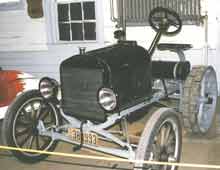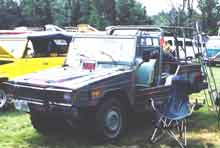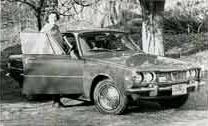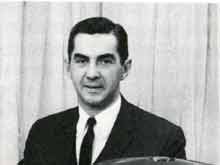Spring Plowing
The snow has melted in Southern Connecticut; the frost is out of the ground and we're finally able to do our spring plowing. My trusty tractor, with which I prepare my modest vegetable garden, has magneto ignition, a two-speed planetary transmission and its oil level is checked with a petcock. "Aha!" you say. "It must be a converted Model T Ford like the one on your page." Well no, it isn't, nor is it a Fordson, the agricultural evolution of the T (with a gear, not planetary, transmission).
My tractor has a 6.6 hp T-head engine, full pressure lubrication, two speeds in reverse and only two wheels. It's a 1958 Gravely Model LI, and it's equipped with the miraculous sod-busting rotary plow that deep-tills the soil so well you can sift it in your hands.
Benjamin Franklin Gravely was a West Virginia inventor who adapted a hand cultivator with an Indian motorcycle engine to create the Model D, an odd-looking machine with the engine inside its single wheel. In time this evolved into the Model L, later called the Convertible, with a one-cylinder engine at the rear and implements mounted on the front. The four-foot snow blade will push more than a foot of powder, and the sturdy rotary mower makes short work of any grass - and small trees if the 3/8-inch thick brush blade is installed. There's a whole myriad of attachments and accessories available, but the plow, mower and snow blade meet my needs completely.
For a while a division of Studebaker Corporation, Gravely tractors are now made by Ariens Company, and the L and Convertible models are no longer part of the mix. The old Gravelys have a loyal following however, and parts are readily available. My garden is now plowed and partly planted, but I'm going to keep my Gravely forever.




